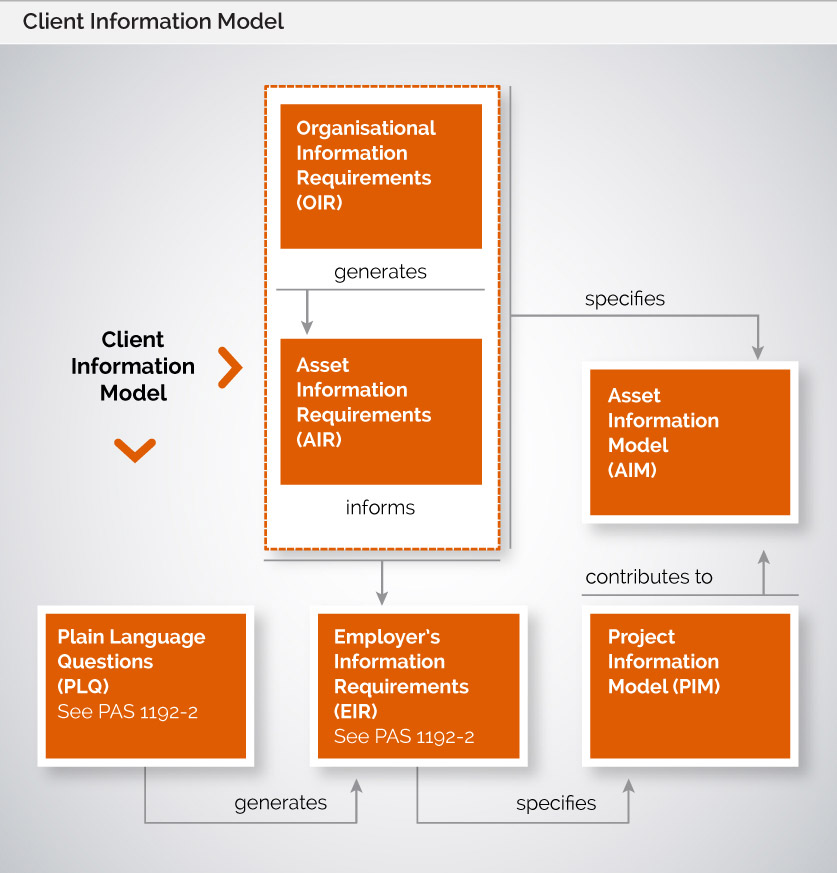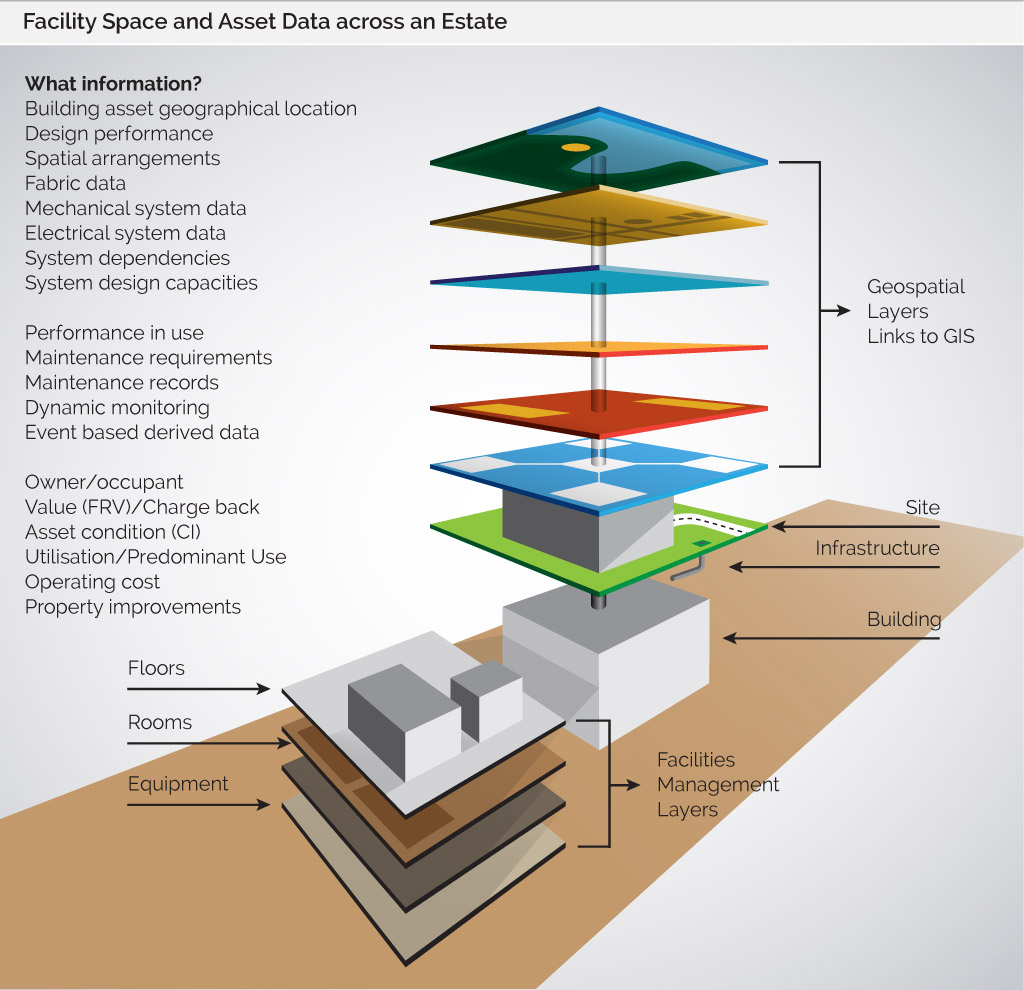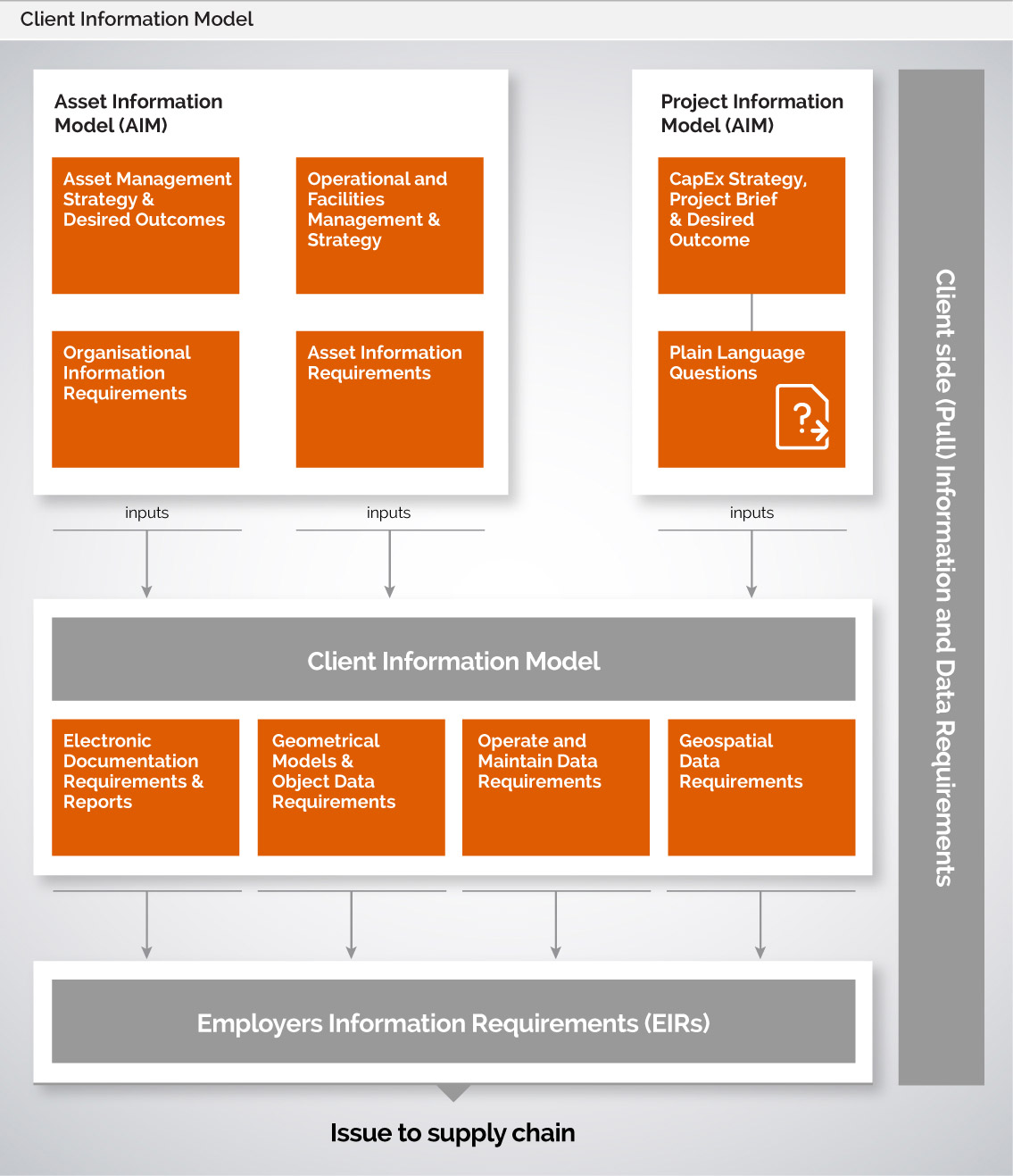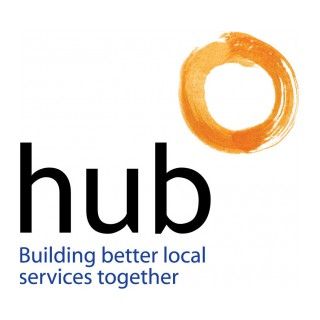The Client Information Model (CIM) defines the strategy for how data and information will support the operational and capital expenditure strategy and inform decision making throughout the project life-cycle. The CIM and its relationship with elements of information management is illustrated in diagram below (left). Essentially the organisation should determine as part of this activity what information it needs to realise successful outcomes at stage and how BIM can support.
Ensuring that assets are digitally represented to support operational activities needs sufficient time and engagement with the asset and facilities management team early on as possible to establish information requirements from geospatial down to manufacturer data attributes as illustrated on diagram below (Right). It is important a Soft Landings approach therefore be taken.
PAS 1192 Part 3 provides a "Specification for information management for the operational phase of assets using building information modelling". It is a companion document to PAS 1192 Part 2 which is a "Specification for information for the capital /delivery phase of construction projects using building information modelling". The Part 3 document provides an approach to creating an asset information model to support the whole life of an asset from create/acquire, through use/maintain and on to renew/dispose.
PAS1192:2 and 3 can be downloaded via this link to the BSI Level 2 BIM portal.
The diagram below illustrates how the Client Information Model sits at the heart of the “pull” side and becomes the basis for establishing the information requirements for a project or programmes asset life-cycle.









